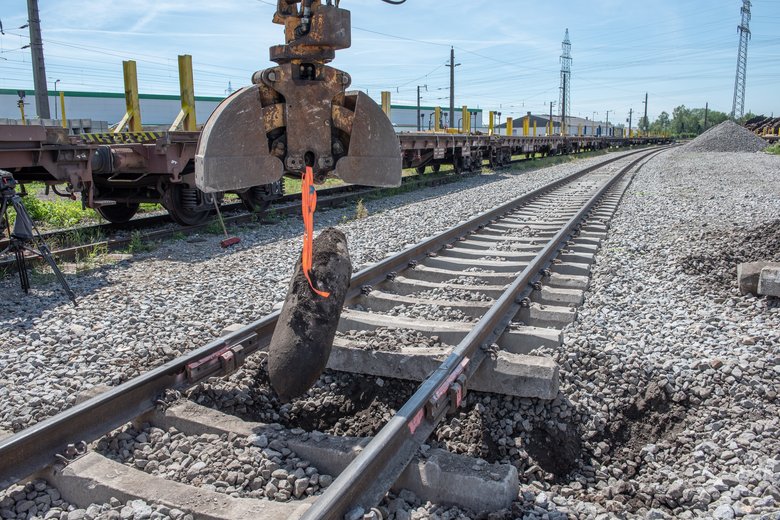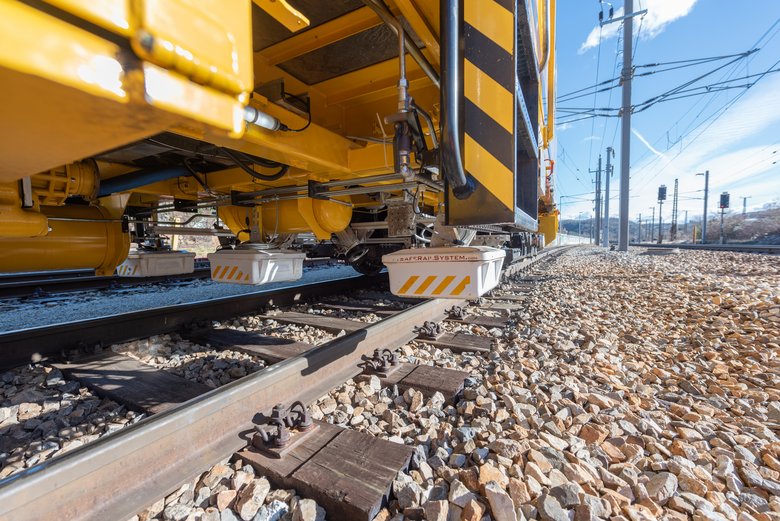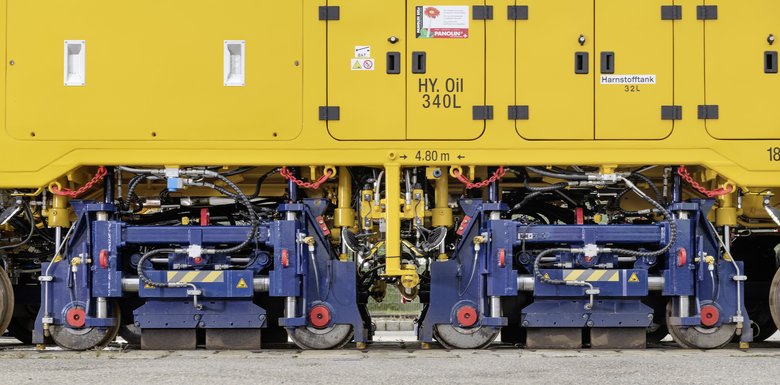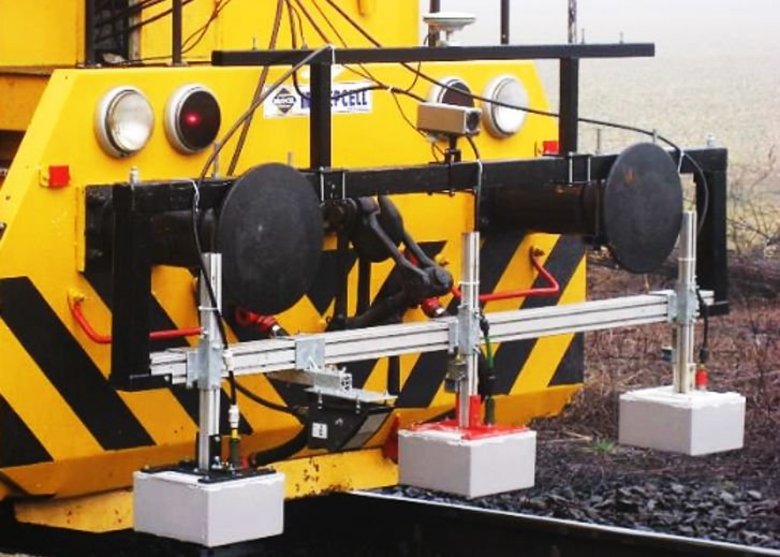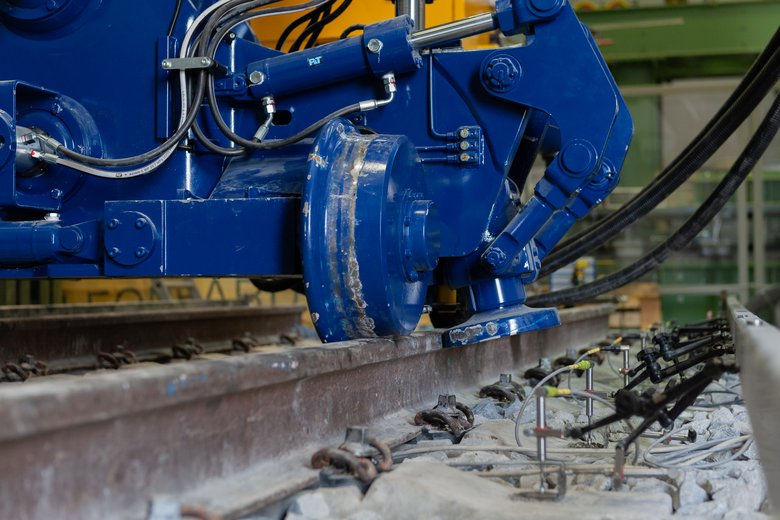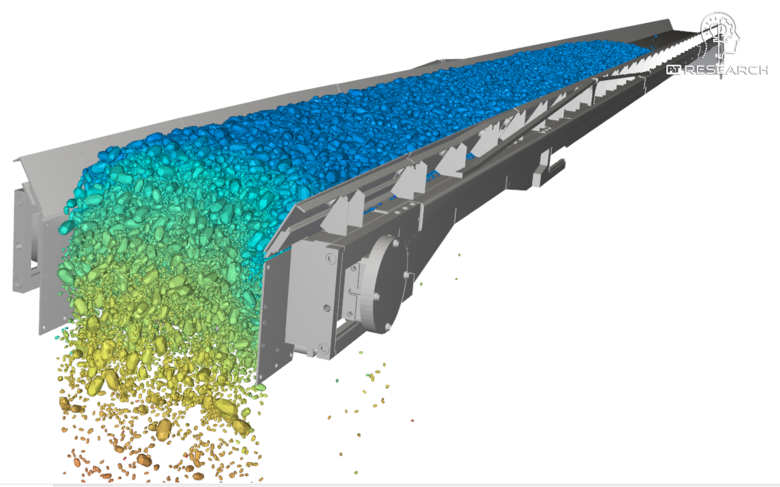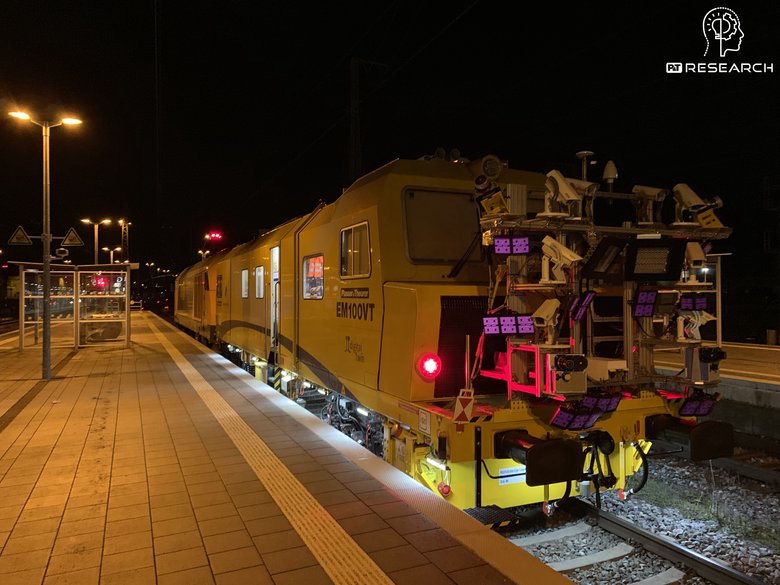Maximum vertical force (F_max) during penetration in kilonewtons (kN) and maximum measured penetration speed (v_max) in metres per second (m/s).
This equation takes into account the fact that the lowering speed of the tamping units can be adjusted by the operator and therefore influences the vertical force. The penetration force thus varies with the speed set by the operator. Despite these variations, the ballast coefficientprovides reliable indicators of the ballast condition. . The above mentioned coefficient must therefore be calibrated in such a way that it relates the penetration force to the lowering speed. This aims to create a precise metric that considers both the penetration process conditions as well as the state of ballast. Long term practical experience show that ballast with a higher degree of contamination makes penetration of the tamping tines more difficult, which leads to an increase in the coefficient. This correlation between penetration force and lowering speed must be taken into account accordingly in the analysis metric of the ballast condition.
Ballast condition classes
Based on the statistical distribution of the data and for several practical reasons, the ballast coefficient values were quantitatively classified into four preliminary condition classes. This systematic classification was chosen due to its practicability and the possibility of standardizing the comparison process.
| Ballast condition class | βBallast in kNs/m |
|---|
| Class I (best condition) | βBallast ≤ 35 |
| Class II | 35 < βBallast ≤ 45 |
| Class III | 45 < βBallast ≤ 60 |
| Class IV (worst condition) | βBallast > 60 |
How meaningful is the βBallast ballast coefficient?
To validate the condition classes, ÖBB took systematic ballast samples, the results from which were compared with the classifications determined from measuring data. The analysis showed that there was an excellent match between the expert-based assessments and the automated, data-enabled classification.
In order to be able to objectively compare the ballast coefficient with the actual condition of the ballast, a single parameter is also required, which on the one hand quantifies the ballast condition and, on the other hand, can be derived from the analysis data of the ballast samples taken.
The traditional indicators for assessing the ballast condition are proving to be inadequate for these purposes. Therefore, an alternative approach was developed: in the laboratory, the mass percentages of the screen passages for the opening widths 22.4 mm, 31.5 mm, and 40 mm were added together. This method corresponds to a weighted sum and favours smaller ballast grain sizes, as they are included in the results of the larger screen openings. The cumulative values of this summation vary as a function of the condition of the ballast and thus represent a meaningful metric.
When analysing the relationship between the ballast coefficient β and the weighted sum values of the particle size distribution, a clear correlation was found. This reinforces the assumption that the ballast coefficient is an effective tool for determining the condition of ballast.
Future research should aim to further improve the accuracy of the ballast coefficient and eliminate any remaining influences resulting from varying machine configurations.


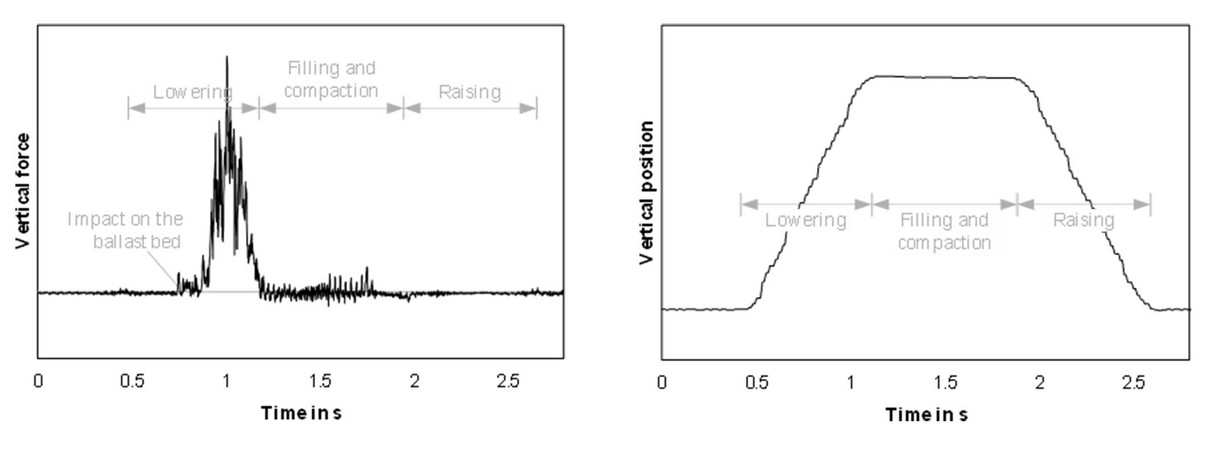
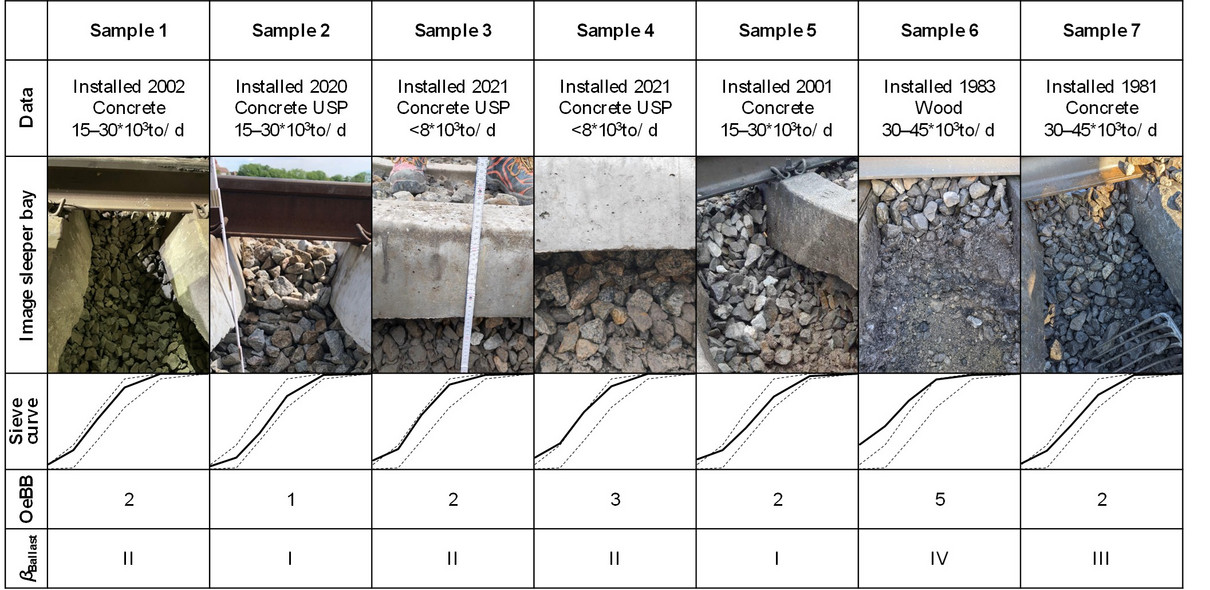




![[Translate to Französisch:] [Translate to Französisch:]](/fileadmin/_processed_/a/9/csm_202109_Visualisierung_beim_Stopfen__1__f0921ecd25.png)


